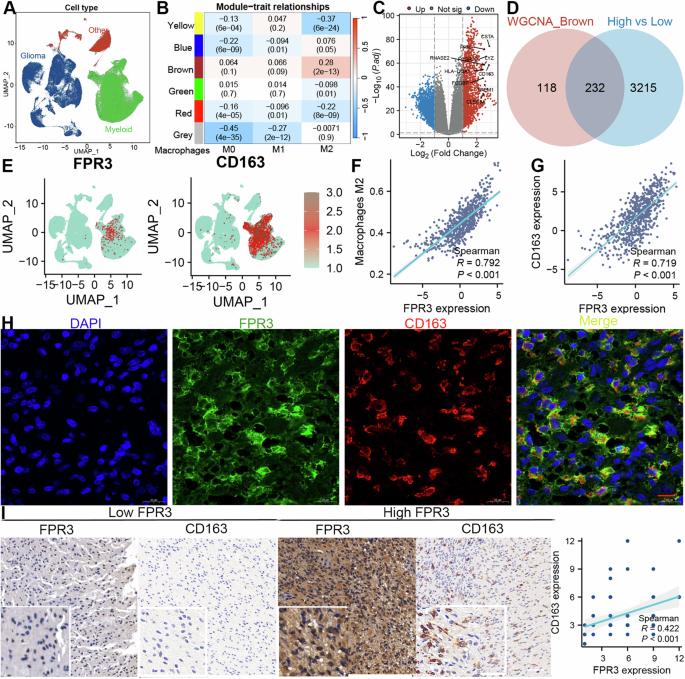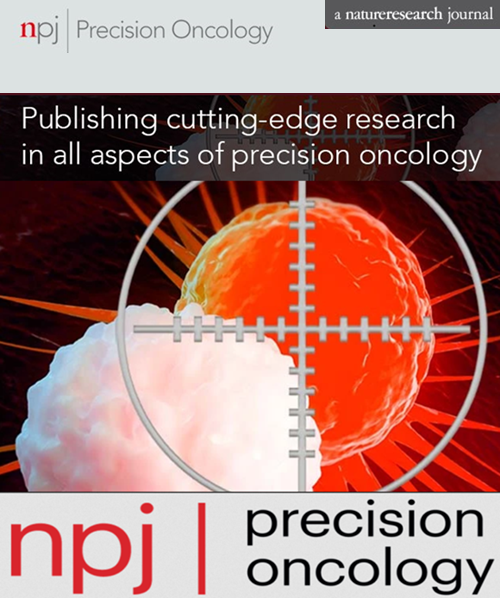Machine learning algorithms for predicting glioma patient prognosis based on CD163+FPR3+ macrophage signature
IF 6.8
1区 医学
Q1 ONCOLOGY
引用次数: 0
Abstract
Tumor-associated macrophages (TAMs) play a vital role in glioma progression and are associated with poor outcomes in glioma patients. However, the specific roles of different subpopulations of TAMs remain poorly understood. Two distinct cell types, glioma and myeloid cells, were identified through single-cell sequencing analysis in gliomas. Within the TAMs-associated weighted gene co-expression network analysis (WGCNA) module, FPR3 emerged as a hub gene and was found to be expressed on CD163+ macrophages, while also being associated with clinical outcomes. Subsequently, a comprehensive assessment was undertaken to investigate the correlation between FPR3 expression and immune characteristics, revealing that FPR3 potentially plays a role in reshaping the glioma microenvironment. We identified a macrophage subset with the nonzero expression of CD163 and FPR3 (CD163+FPR3+). Using the expression profiles of CD163+FPR3+ macrophage-related signature, we employed ten machine learning algorithms to construct a prognostic model across six glioma cohorts. Subsequently, we employed an optimal algorithm to generate an artificial intelligence-driven prognostic signature specifically for CD163+FPR3+ macrophages. The development of this model was based on the average C-index observed in the aforementioned six cohorts. The risk score of this model consistently and effectively predicted overall survival, surpassing the accuracy of conventional clinical factors and 100 previously published signatures. Consequently, the CD163+FPR3+ macrophage-related score shows potential as a prognostic biomarker for glioma patients.

基于 CD163+FPR3+ 巨噬细胞特征预测胶质瘤患者预后的机器学习算法
肿瘤相关巨噬细胞(TAMs)在胶质瘤的发展过程中起着至关重要的作用,并与胶质瘤患者的不良预后有关。然而,人们对不同亚群 TAMs 的具体作用仍然知之甚少。通过对胶质瘤进行单细胞测序分析,确定了两种不同的细胞类型,即胶质瘤细胞和骨髓细胞。在与TAMs相关的加权基因共表达网络分析(WGCNA)模块中,FPR3成为一个枢纽基因,并被发现在CD163+巨噬细胞上表达,同时还与临床结果相关。随后,我们对FPR3表达与免疫特征之间的相关性进行了全面评估,发现FPR3可能在重塑胶质瘤微环境中发挥作用。我们发现了一个具有非零表达 CD163 和 FPR3(CD163+FPR3+)的巨噬细胞亚群。利用 CD163+FPR3+ 巨噬细胞相关特征的表达谱,我们采用了十种机器学习算法,构建了六个胶质瘤队列的预后模型。随后,我们采用了一种最佳算法,专门针对 CD163+FPR3+ 巨噬细胞生成了人工智能驱动的预后特征。该模型的开发基于上述六个队列中观察到的平均 C 指数。该模型的风险评分能持续有效地预测总生存期,其准确性超过了传统临床因素和之前发表的 100 个特征。因此,CD163+FPR3+巨噬细胞相关评分显示出作为胶质瘤患者预后生物标志物的潜力。
本文章由计算机程序翻译,如有差异,请以英文原文为准。
求助全文
约1分钟内获得全文
求助全文
来源期刊

NPJ Precision Oncology
ONCOLOGY-
CiteScore
9.90
自引率
1.30%
发文量
87
审稿时长
18 weeks
期刊介绍:
Online-only and open access, npj Precision Oncology is an international, peer-reviewed journal dedicated to showcasing cutting-edge scientific research in all facets of precision oncology, spanning from fundamental science to translational applications and clinical medicine.
 求助内容:
求助内容: 应助结果提醒方式:
应助结果提醒方式:


